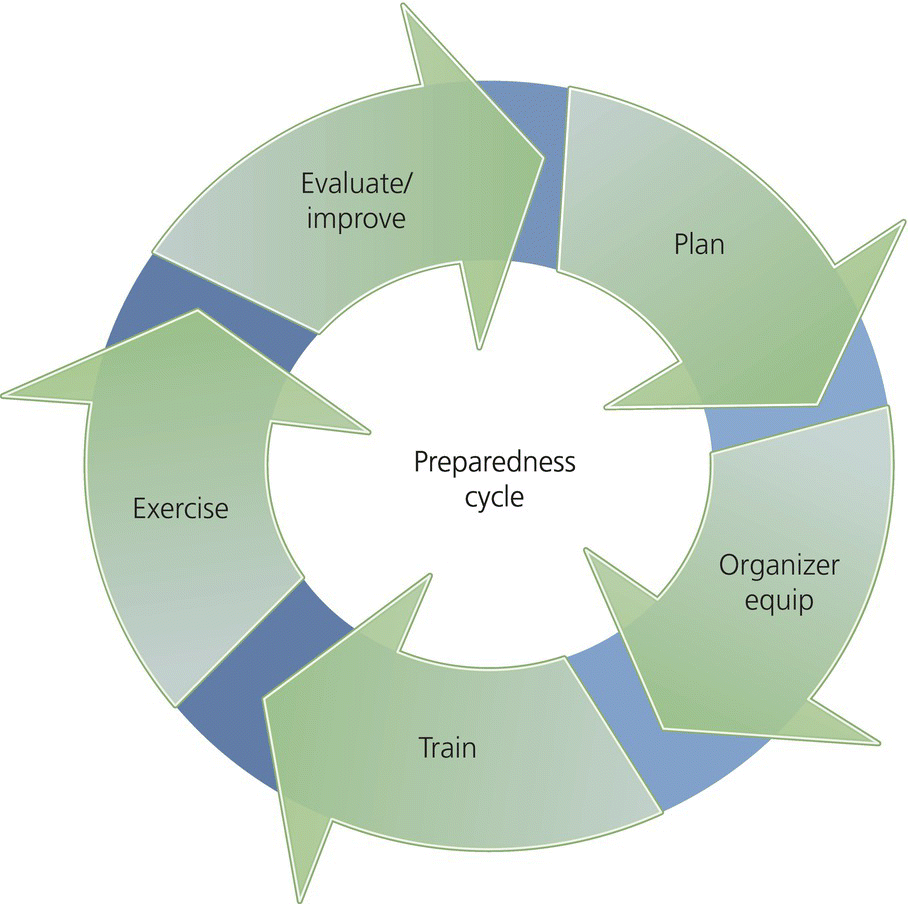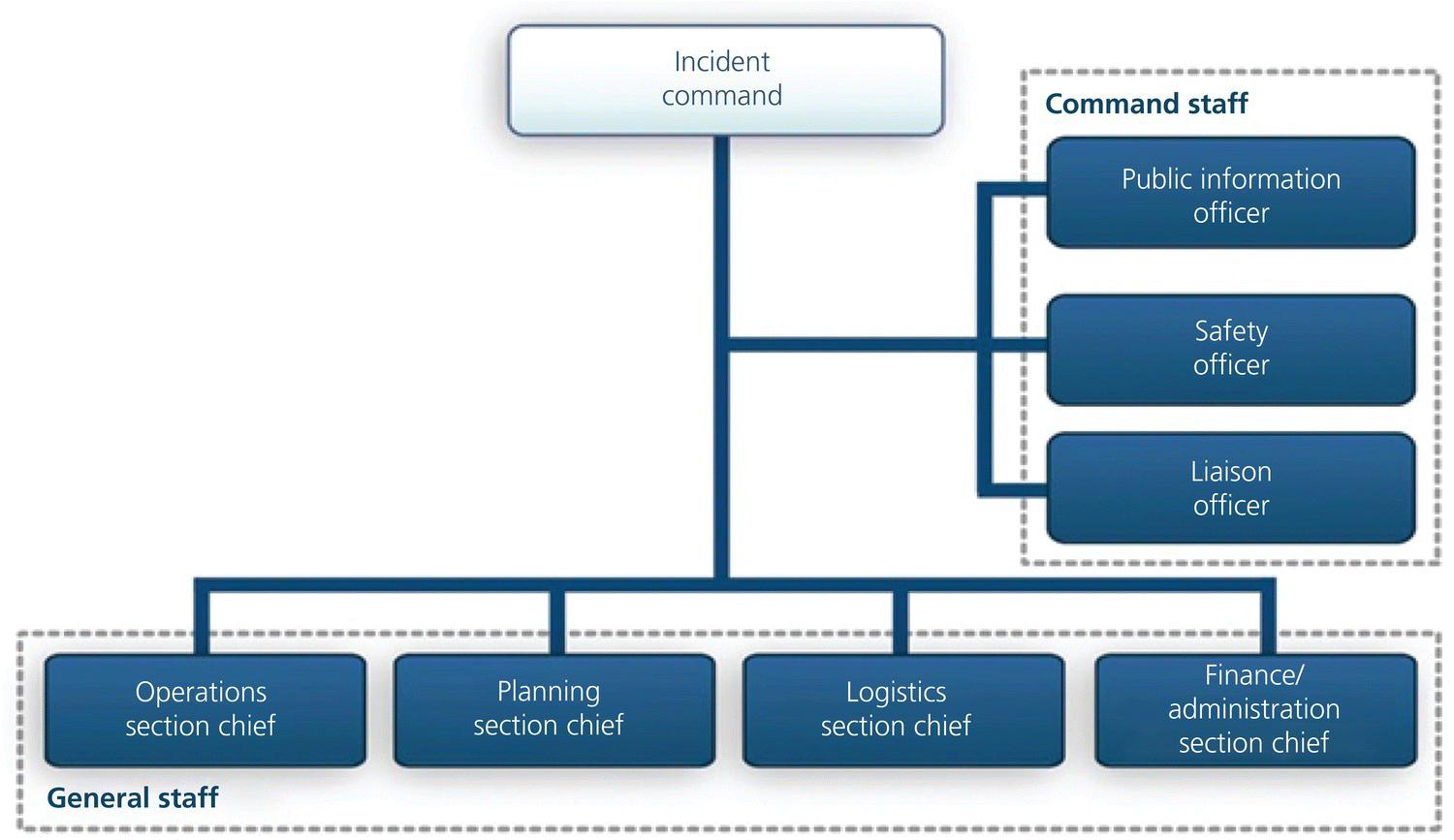Chapter 28 Alexander P. Isakov Disasters are natural or man-made events which cause such an overwhelming loss of life, injury, destruction of property, or loss of infrastructure as to prevent a community’s ability to respond without outside assistance. Emergency medical services are vital for disaster management, and the administrative and medical leadership of EMS should be actively involved in all of its phases: planning, mitigation, response, and recovery [1]. While all disasters are local, a national framework for disaster management has been defined by the Federal Emergency Management Agency to coordinate federal assets and to assist local communities to develop disaster management strategies that are effective and allow for cross-jurisdictional communication. The national framework is risk based, referencing the findings of the Strategic National Risk Assessment [2], which identifies the greatest threats facing the nation’s homeland security, in three categories. The list of risks considered on a national level is not comprehensive yet it helped to identify core capability requirements and contributed to the development of the federal framework for disaster management. Local and regional jurisdictions will conduct assessments that will identify other threats and hazards (drought, heat wave, tornado, etc.) that are appropriate for their preparedness planning and will largely be served by the core capabilities required to respond to all hazards. The federal framework for disaster management is based on Presidential Policy Directive 8 (PPD-8) [3]. Presidential directives are a form of executive order issued by the President of the United States that address the policy of the executive branch in relation to matters of national security, and carry the full force and effect of the law. PPD-8 aimed to strengthen the security and resilience of the United States through systematic preparation for all hazards. It established that preparedness is a shared responsibility of all levels of government, the private and non-profit sector, and individuals. PPD-8 defined a National Preparedness Goal: “A secure and resilient nation with the capabilities required across the whole community to prevent, protect against, mitigate, respond to and recover from the threats and hazards that pose the greatest risk.” It established a National Response System, which outlines the approach, resources, and tools for achieving the goal. It also defined National Planning Frameworks which define how to best meet the needs of individuals, families, communities, and states in their ongoing efforts to prevent, protect, mitigate, respond to and recover from any disaster event. The frameworks address how the whole community works toward achieving the National Preparedness Goal across the five defined mission areas. Among these, the National Response Framework (NRF) defines the doctrine by which the nation responds to any type of disaster or emergency. The term response is defined to include actions which “save lives, protect property and the environment, stabilize communities, and meet basic human needs following an incident.” This includes the execution of emergency response plans to support short-term recovery. The core capabilities for response defined by the NRF are as follows [4]. The NRF also describes “emergency support functions” which serve as a means to organize response resources and capabilities. These are used by the federal government and many states, and have been adopted locally to build, sustain, and deliver the core response capabilities. For more information on ESF 8, see Volume 2, Chapter 29. Response operations involve many partners and stakeholders. The NRF is aligned with the National Incident Management System (NIMS) [5], which defines the command and management structures that allow for scalable, multijurisdictional response to any type of disaster. The NIMS provides templates for the management of incidents, while the NRF provides the structure and mechanisms for incident management policy development. The NIMS is based on the principle that use of a common incident management framework will give response personnel a flexible but standardized system for incident response and disaster management. The NIMS has five major components. The incident command system (ICS), well recognized by emergency responders and adopted by federal, state, and local governments as well as the private sector for incident management, is a component of this system. The ICS is structured to facilitate activity in five functional areas: command, operations, planning, logistics, and finance/administration (Figure 28.2). Figure 28.1 The preparedness cycle – actions taken to build preparedness for catastrophic events. Figure 28.2 Incident command system: command and general staffs. . Source: http://www.fema.gov/pdf/emergency/nims/NIMS_core.pdf, pp 53 The ICS organizational structure develops in a modular fashion based on the size and complexity of the incident as well as the specifics of the hazard. As the magnitude and complexity of the incident increase, the organization expands as functional responsibilities are delegated. The Federal Emergency Management Agency (FEMA) provides an independent study program through its Emergency Management Institute that allows those with emergency management responsibilities and the general public to obtain training and education through distance learning, free of charge. The training supports the mission areas identified by the National Preparedness Goal. Over 125 training courses are available. NIMS introductory courses include the following [6].
Disaster preparedness and management
Introduction
Federal framework for disaster management


Stay updated, free articles. Join our Telegram channel

Full access? Get Clinical Tree




